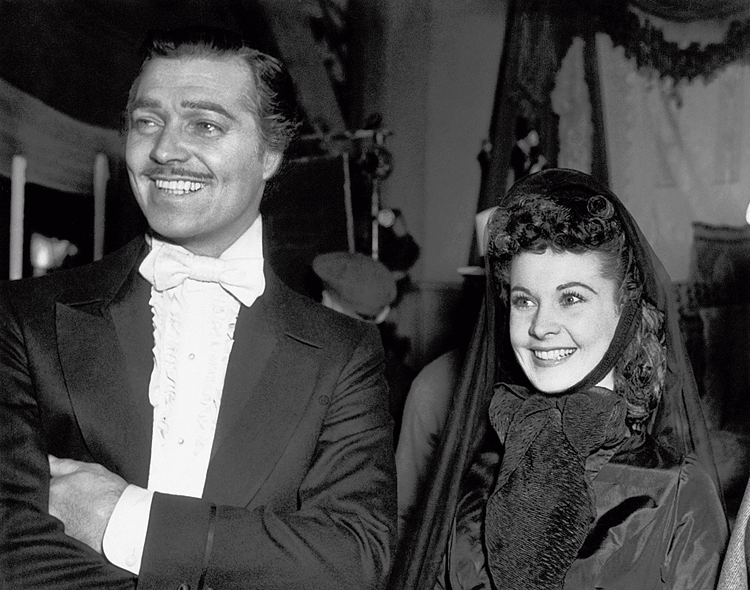When HBO Max announced on Tuesday that it was temporarily removing Gone With the Wind from its streaming service, it seemed as if another Confederate monument was coming down.
Gone With the Wind may register with younger people today only as their grandmother’s favourite movie (or maybe, the source of a lacerating joke that opens Spike Lee’s BlacKkKlansman). And for every prominent conservative accusing HBO Max of censorship, there were plenty on social media calling the movie, well, boring.
But the 1939 classic — still the highest-grossing film of all time, adjusted for inflation — has enduringly shaped popular understanding of the Civil War and Reconstruction perhaps more than any other cultural artifact.
“You want to have a Southern antebellum wedding — where does that come from?” said Kellie Carter Jackson, a historian at Wellesley College who teaches a course on slavery and film. “People will say they haven’t seen the movie. But they have seen it — just not in its original form.”
HBO Max’s move came a day after the Los Angeles Times published an opinion piece by John Ridley, the screenwriter of Twelve Years a Slave, criticising Gone With the Wind for its racist stereotypes and whitewashing of the horrors of slavery, and calling for it to be presented only with added historical context.
(A few days later, the African-American film scholar Jacqueline Stewart announced in an opinion piece for CNN.com that she will be providing the introduction when the movie returns to the streaming service.)
But it also represents a belated reckoning with African-American criticism that started immediately after the 1936 publication of Margaret Mitchell’s novel — even if it was barely noted in the mainstream white press.
Gone With the Wind is one of the mythic lightning strikes of American cultural history. Mitchell, a former journalist who wrote the novel (her first and only) while recovering from an injury, expected it to sell 5,000 copies.
Instead, it became a sensation, selling nearly a million copies within six months, and earning her the Pulitzer Prize and the National Book Award.
The production of the movie version, including the casting of Scarlett O’Hara and Rhett Butler, was covered breathlessly in the press. And by opening night, in 1939, seven million copies of the book had been sold.
The frenzy around the novel and the movie also touched off a national craze for all things Dixie. Mitchell was inundated with requests to authorise Gone With the Wind-themed pens, hats, dolls, even chintz fabric. In 1939, Macy’s devoted several floors of its flagship store to products associated with the film, under the theme “The Old South Comes North”.
“People just ate it up,” said Karen L. Cox, a historian at the University of North Carolina, Charlotte, and the author of Dreaming of Dixie: How the South Was Created in American Popular Culture. And the Northern embrace of Mitchell’s plantation nostalgia, with its depiction of happy, obedient slaves, wasn’t just harmless lifestyle consumerism.
“There was nascent civil rights activity in the 1930s, but if everyone is watching this movie or reading this book, they get the idea that that’s how things were,” Cox said. “It made it easier for white Northerners to look at African-American migrants arriving in places like Chicago and say, ‘Why can’t you act like these Negroes?’”
But even as white Americans embraced the moonlight and magnolias, African-Americans were registering objections. Soon after the producer David O. Selznick bought the rights, there were complaints that a movie version would incite violence, spread bigotry and even derail a proposed federal anti-lynching bill.
Margaret Mitchell reacted dismissively to the criticism. “I do not intend to let any troublemaking Professional Negros change my feelings towards the race with whom my relations have always been those of affection and mutual respect,” she wrote to a friend.
Selznick did a more complicated dance. “I for one have no desire to produce any anti-Negro film,” he wrote in a memo to the screenwriter Sidney Howard.
“In our picture I think we have to be awfully careful that the Negroes come out decidedly on the right side of the ledger.”
In 1936, Walter White, the secretary of the NAACP, wrote to him expressing concern, and suggesting he hire someone, preferably an African-American, to check “possible errors” of fact and interpretation.
“The writing of history of the Reconstruction period has been so completely confederatised during the last two or three generations that we naturally are somewhat anxious,” he wrote.
Selznick initially floated the name of one potential African-American adviser, but ultimately hired two whites, including a journalist friend of Mitchell’s, tasked with keeping the Southern speech authentic (a matter of great concern to some white fans of the novel who wrote to Selznick) and avoiding missteps on details like the appropriateness of Scarlett’s headgear at an evening party.
The film tried to sanitise some of the novel’s racist elements. References to the Ku Klux Klan, which the novel calls “a tragic necessity”, were omitted. Reluctantly, Selznick also cut from the script a common but notorious racial slur (“the hate word,” as one African-American journalist who weighed in put it).
New York Times News Service











